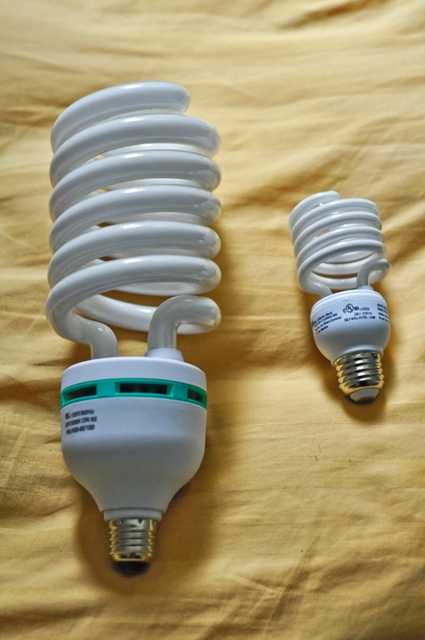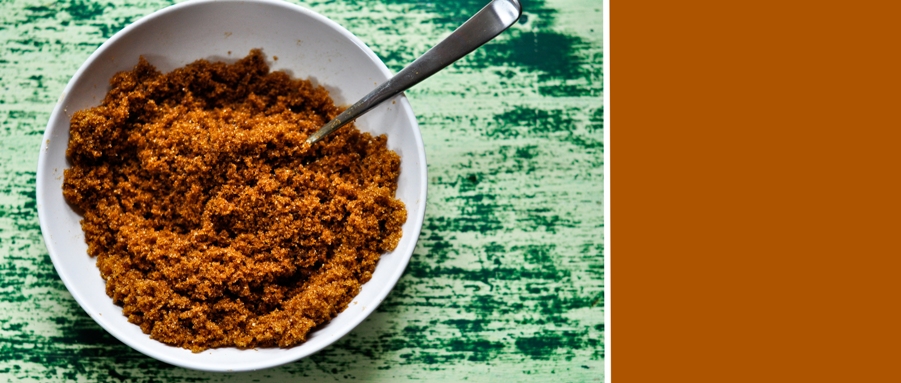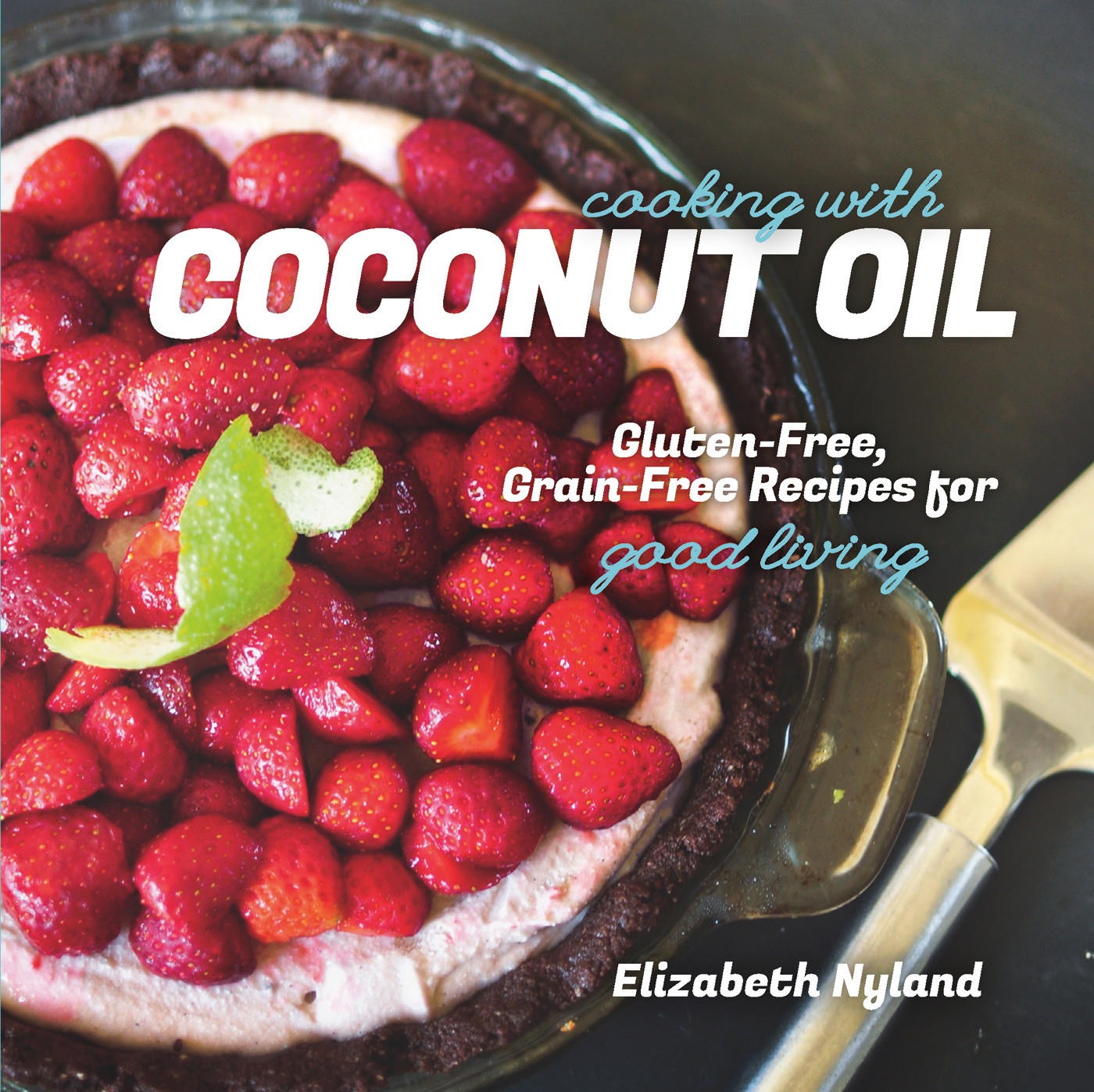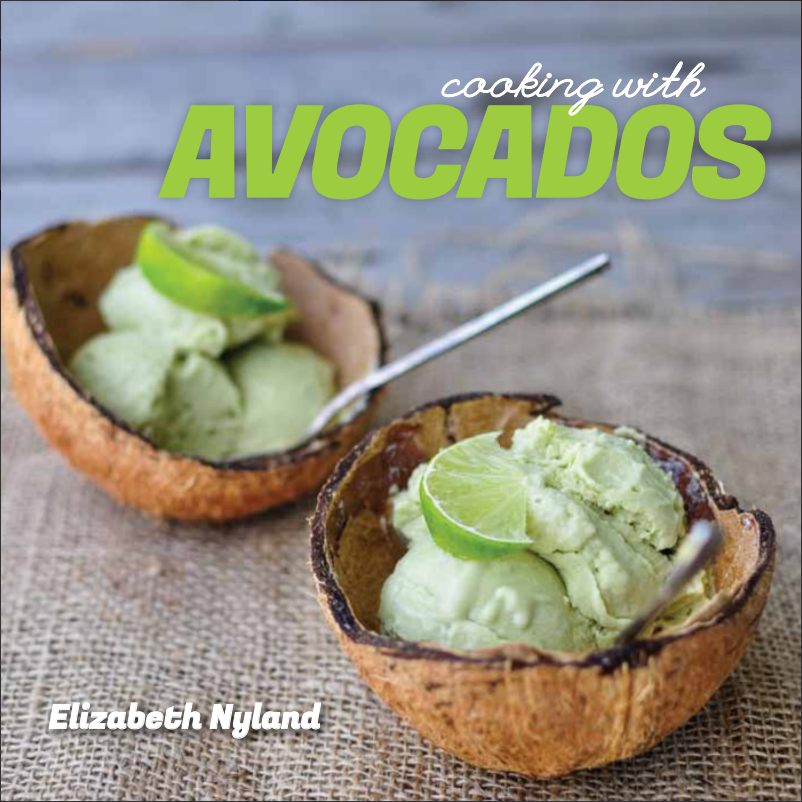This week has been hectic with the bad weather and the not having a car to be able to escape from the house. We only bought winter tires for one vehicle, being the stringent adherers to a budget that we are. Alas it makes for some pretty boring days trapped in the house with two kids and only so many rounds of puzzles, books, fort building and baking.
What I did earn was a break. And I got it this weekend when Mr. Guilty himself booked me a lovely surprise haircut (complete with relaxing neck and scalp massage) in the big city. We traipsed the two kids and a set of grandparents for help all the way (45 minutes) into the city so I could have that glorious 45 minutes of time to myself. And oh what glorious minutes they were.
There was another surprise though, this:
Is that not the biggest light bulb you’ve ever seen??!
Goodbye horrible night shots with crappy 100W CFL bulbs. Hello brighter than the sun 500W CFL bulb. This thing is amazing! I am now setting up my own studio and hope to get some serious practice in the next months with artificial lighting and photography, not my strongest suit, but I will persevere!
So let’s get to the recipe shall we?
This is more of a culinary tip than a full blown recipe, what with only two ingredients, but I guarantee you’ll use it at some point in your baking life.
In my neck of the woods, finding organic ingredients is tough, especially “specialty” organic ingredients like brown sugar. It’s just not something a lot of people are looking for and so the stores don’t stock it. At all. All I can get close to is demerera sugar which is similar but not the same:
From Wikipedia:
“Natural brown sugar is brown sugar made by partially refining sugar cane extract, whereas most brown sugar is made by adding molasses to fully refined sugar.
Golden coloured natural brown sugar is produced by extracting the juice from sugar cane, heating it to evaporate water and crystallise the sugar, then spinning in a centrifuge to remove some impurities and further dry the sugar. It is commonly used in baking and to sweeten beverages such as coffee and tea.”
Demerera or turbinado sugars are dry and do not exchange well in recipes that call for lots of brown sugar. They change the moisture content too much.
There is an alternative though:
Muscavado sugar definition from Wikipedia:
“Also known as “Barbados sugar” or “moist sugar”, muscovado is very dark brown and slightly coarser and stickier than most brown sugars. Muscovado takes its flavor and color from its source,sugarcane juice. It offers good resistance to high temperatures and has a reasonably long shelf life. It is commonly used in baking recipes and making rum. Muscovado sugar can be used in most recipes where brown sugar is called for, by slightly reducing the liquid content of the recipe.[1]“
Also not the same as comercially available brown sugar as it is even more moist. And all of this leaves me very sad, because I am obsessed with brown sugar. I love the flavour so much I often exchange it in recipes for white sugar where it won’t affect the recipe too much. It’s in almost every baked good recipe on my site. Need I say more?
So where does that leave us then? Well, luckily, making your own brown sugar is so easy a toddler could do it. Honestly. The next time you find yourself out of brown sugar or looking for an organic variety, here’s what you do:
One Year Ago: Making Sushi at Home
How to Make Brown Sugar
1 cup organic cane sugar
1 Tbsp organic unsulphured molasses1. Blend both ingredients together with a fork until well mixed.
2. Store in an airtight container until ready to use.
Recipes to use your delicious brown sugar in:
Brown Butter Roasted Banana Bread on Guilty Kitchen
Pumpkin Carrot Bread on Guilty Kitchen
Brown Butter Apple Spice Cookies on Guilty Kitchen
Chewy Molasses Spice Cookies on Guilty Kitchen
A Better Carrot Cake on Guilty Kitchen









oh wow! that was simple 🙂 thanks!
Seriously? That’s it!! Oh my god…really? This is the best post. I’m a huge fan of DIY as long is it isn’t to much of a pain and this is perfect! I did a post on making your own vanilla extract. Ranks about the same as your brown sugar on the difficulty scale. 🙂 Very cool post…thank you!
What a special treat for you! I love getting my hair done and a scalp massage would be icing on the cake!!
I’ve definitely heard about the making of brown sugar but I can’t say I’ve ever done it myself. As expensive as the organic stuff is in the stores though, I think I may just have to give this a whirl.
Once again, a great idea. I’m surprised it’s so hard to find brown sugar where you are. I thought it was a staple everywhere. I take these things for granted, I guess — just eatin’ fistfulls of brown sugar any time of day or night, with crazy abandon.
Ok, that’s a BIG lightbulb. BIG! I’ll be curious to know how that works out, because let’s face it, wouldn’t it make life so much easier to be able to take pics after dark? You should see all the scrambling that starts happening around here once 4PM rolls around 🙂
Damn that bulb is huge. Great post Mrs. Guilty! You deserved the time off. Sorry it wasn’t longer! Love you!
I cant find brown sugar in my neck of the woods either. Or molasses for that matter (I live in Italy) But I have been able to find the muscavado kind. And I have some fair trade kind that seems to work really well for baking. If I could I would totally do this method though – thanks for sharing!
That lightbulb could light up a stadium,let alone your own studio! Thats too cool! Thanks for posting this, I will definetly have brown sugar handy from now on!
Yay! Another tip for an ingredient work around. This one gets filed right next to the ‘make buttermilk.’
My Man’s Belly recently posted..Christmas Candy Recipes- Cocoa Nib Brittle
I can’t wait to try this out!!! It never fails that I start to make some cookies that call for brown sugar and … I’m out!!!
Nancy@acommunaltable recently posted..A Classic re invented – Roasted Tomato Soup
Beautiful photography and post.
I thought I lived in a small remote area having to make my own edible glitter. But you have to make your own brown sugar? That is crazy! Thankfully it’s pretty easy.
Awesome. I feel your pain. I live in the middle of nowhere as well, but on the plains. No trees 🙁 I miss trees. I love this! As someone who is organic AND gluten free with Celiac’s in the kids as well and a 2 hour drive to get anything that is EITHER, I LOVE the do it yourself!!! Thanks so much!!!!
Do you pack the brown sugar as most recipes call for or leave it loose?
In recipes calling for brown sugar, it should always be packed unless otherwise specified.
just found your site- love it. 🙂 I too have bought the larger bulbs trying to get my photos better. If you ever want to do a guest post sometime let me know. Happy Holidays!
Thank you for the recipe! I love your site! I will be back for sure. 🙂
See you then!
Thank a lot it really helped
Now, how to make Molasses and Cane Sugar??? 😉 I am constantly amazed at how easy things we take for granted, are so easy to make. I have stopped buying all but the most basic ingredients and making my own, such as butter, sour cream, mayo, mustard, ketchup, BBQ sauce, and cheeses. My kids think I am nuts, speaking of nuts, I have started making nut flours and nut butters too… I feel like a whole world has been opened to me. I find it funny that while my kids are making fun of me, they are trying to find things to put my homemade butter on, because it is sooo goood… Thank you for my next foray into getting back to the basics…
My pleasure. My kids love it too, but at first were completely weirded out. Huh…:)
[…] This post was mentioned on Twitter by Nancy Buchanan, Elizabeth Nyland. Elizabeth Nyland said: Week 4 of our Culinary Fundamentals Series: How to Make Brown Sugar. It's as easy as you think it is. http://fb.me/MWkQHl5t […]
[…] Elizabeth, over at Guilty Kitchen, shows how to make your own brown sugar, if you find yourself […]